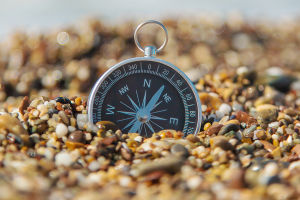Colored pencils are a versatile drawing tool made from colored pigments encased in a thin wooden stick.
They blend the flexibility of a pencil with the broad range of colors provided by the pigments, making them essential for both painting and sketching.
Colored pencils cater to various painting styles and techniques, making them beloved by professional artists and amateurs alike. They are particularly valued as a starting tool for those new to painting.
What sets colored pencils apart is their ability to create delicate color gradients and rich layering on paper. The fineness of the pencil tip can be easily adjusted by sharpening, allowing for precise control over detail and texture.
The most appealing aspect of colored pencils is their color expression. Unlike watercolors and oil paints, colored pencils have a dry pigment texture that does not require water or solvents for dilution, leading to more precise color control.
Through techniques such as layering, superposition, and mixing, users can achieve complex color effects. The impact of colored pencils on paper is influenced not only by the color of the pencil core but also by the pressure applied by the user.
Light strokes can create soft, light colors, while increased pressure results in rich, full tones. This control of pressure makes colored pencils an invaluable tool for artistic expression.
There are generally two types of colored pencils: oil-based and water-soluble. Oil-based colored pencils contain oil-based components, offering high color saturation and vibrant hues. They are durable, less prone to fading, and unaffected by water.
In contrast, water-soluble colored pencils can be blended with a water brush or wet brush to produce a watercolor-like effect. This feature significantly broadens the artist's creative possibilities, allowing for both traditional drawing and watercolor-like effects.
For beginners, colored pencils are an ideal choice. They are relatively simple to use and do not require additional tools or advanced skills. With just a colored pencil and a piece of paper, anyone can start creating art.
Moreover, the layering technique of colored pencils allows beginners to build color gradually from light to dark, which simplifies the process compared to other mediums like oil painting or watercolor. Additionally, colored pencils are more affordable than many other art materials, making them accessible for those new to art.
While colored pencils are easy to use, mastering their technique can be challenging. Advanced colored pencil drawing often demands great patience and attention to detail. Artists use colored pencils to achieve realistic textures and light and shadow effects, such as depicting fur, tree bark, or skin.
This intricate technique requires a deep understanding of color, structure, and light, with artists gradually building up color layers throughout the drawing process. Although colored pencils lack the heavy texture of oil paints, their layering technique can produce incredibly detailed and realistic results.
In contemporary art, colored pencils are widely used. Many illustrators and designers prefer them for their ease of use and stable color retention over time.
Colored pencils are versatile and can be used on various paper types, from smooth cardboard to textured sketch paper, each yielding different artistic effects. Their diversity makes them suitable for a range of artistic projects, from simple still-life sketches to complex, hyper-realistic works.
Colored pencils are a highly expressive medium, suitable for artists at all levels. Whether creating a straightforward sketch or an intricate artwork, colored pencils enable artists to convey their vision through unique color expression and ease of use.
With ongoing advancements in colored pencil production technology, this medium will continue to hold a significant place in the world of art, remaining an indispensable tool in artistic creation.


